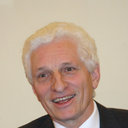A novel missense mutation in the NSDHL gene identified in a Lithuanian family by targeted next-generation sequencing causes CK syndrome.
Кључне речи
Апстрактан
The NSDHL gene encodes 3β-hydroxysteroid dehydrogenase involved in one of the later steps of the cholesterol biosynthetic pathway. Mutations in this gene can cause CHILD syndrome (OMIM 308050) and CK syndrome (OMIM 300831). CHILD syndrome is an X-linked dominant, male lethal disorder caused by mutations in the NSDHL gene that result in the loss of the function of the NSDHL protein. CK syndrome is an allelic X-linked recessive disorder. So far, 13 patients with CK syndrome from two families have been reported on. We present a new five-generation family with affected males manifesting clinical features of CK syndrome. Next generation sequencing was targeted to a custom panel of 542 genes with known or putative implication on intellectual disability. Missense mutation p.Gly152Asp was identified in the NSDHL gene in the DNA sample of the affected male. Mutation carrier status was confirmed for all the obligate carriers in the family. The clinical features of the affected males in the family manifested as weak fetal movements, severe intellectual disability, seizures, spasticity, atrophy of optic discs, microcephaly, plagiocephaly, skeletal abnormalities, and minor facial anomalies, including a high nasal bridge, strabismus, and micrognathia. A highly significant preferential transmission of the mutation was observed in this and previous families segregating CK syndrome. Our report expands the clinical spectrum of this syndrome to include weak fetal movements, spasticity, and plagiocephaly, and transmission ratio distortion. The various findings in these patients increase our understanding of the diversity of the clinical presentation of cholesterol biosynthesis disorders.


